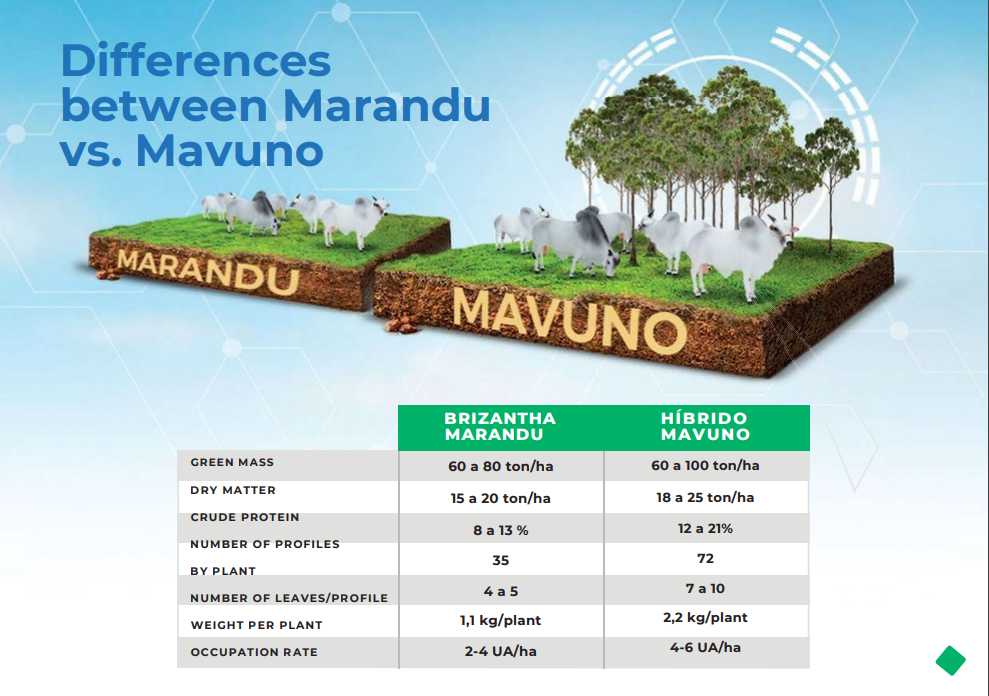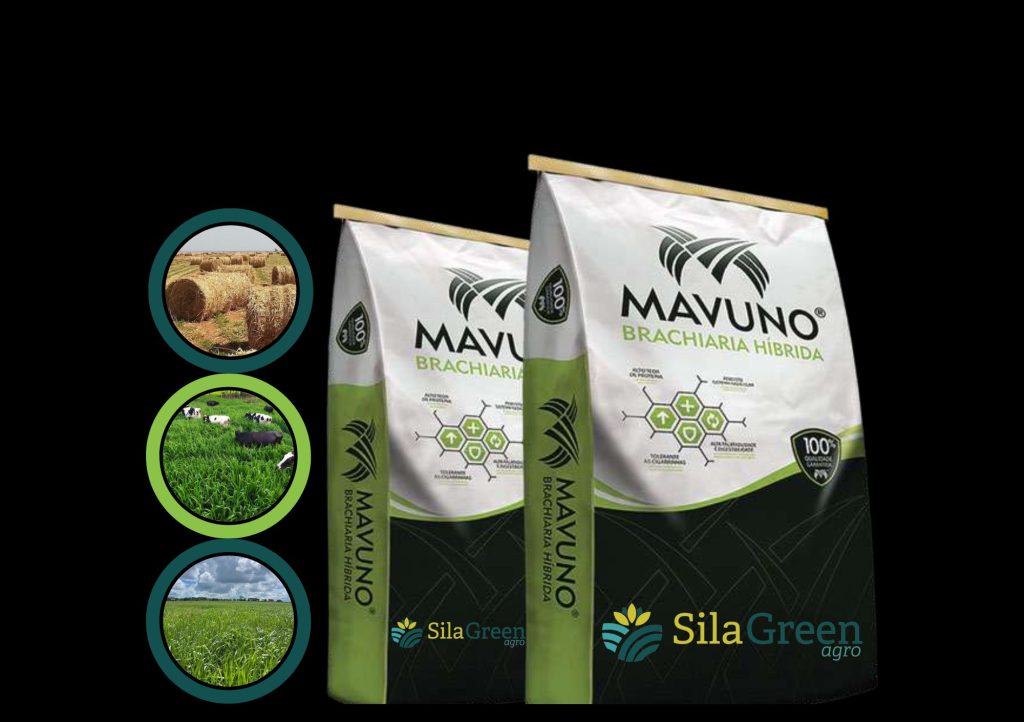MAVUNO produces between 60 and 100 tons/ha/year of green mass. This large supply of forage compared to other varieties makes MAVUNO the most consistent grass for weight gain (meat production) and milk production per hectare.
DESCRIPTION:
Scientific name: Urochloa brizantha x Urochloa ruziziensis cv. Mixe Drwn 12 Incrusted Seeds:
Family: Grasses
Vegetative Cycle: Perennial
Growth Form: Aerial Clump
Erect growth with an average height of 1.30 m
ADAPTATION:
Soil type: Medium/High Fertility
Altitude: up to 1,800 m
Annual precipitation: Above 800 mm
TOLERANCE:
Drought: High
Cold: High
Humidity: Low
Leafhopper: High
Shade: Medium/High
PRODUCTION:
Dry Matter: 20 – 25 t/ha/year
Crude Protein in DM.: 10 – 14% (dry season), 17 – 21% (wet season)
Acceptability by the animal: Excellent
Root System and Establishment
MAVUNO has broad, aggressive and robust roots, which can reach more than 4 m in depth. Therefore, after the first few days of sowing, MAVUNO first establishes its root system and then emits its aerial part.
The root system plays a fundamental role in the plant development. As it is the “mouth” of the grass, it is
responsible for the absorption of nutrients, so important for the good establishment of pastures, such as
potassium and phosphorus. Therefore, one of the main strengths of MAVUNO is its root system that allows:
Greater absorption of water and nutrients;
Greater tolerance to water stress;
High capacity for regrowth in water;
Shorter waiting time for animals to enter in a rotational system;
Greater profitability;
Greater productivity in droughts.
Differences between Brachiaria Marandu vs. Mavuno

Forage Quality
By having a higher leaf/stem ratio, MAVUNO contributes to a better quality forage supply, providing a higher stocking rate during the rainy season, consequently higher ADG (average daily weight gain).
In addition to high production, MAVUNO has soft, wide and hairy leaves on both sides, increasing consumption by the animal. The quality of the forage also reflects its tolerance to pasture leafhoppers,
shading and frost


